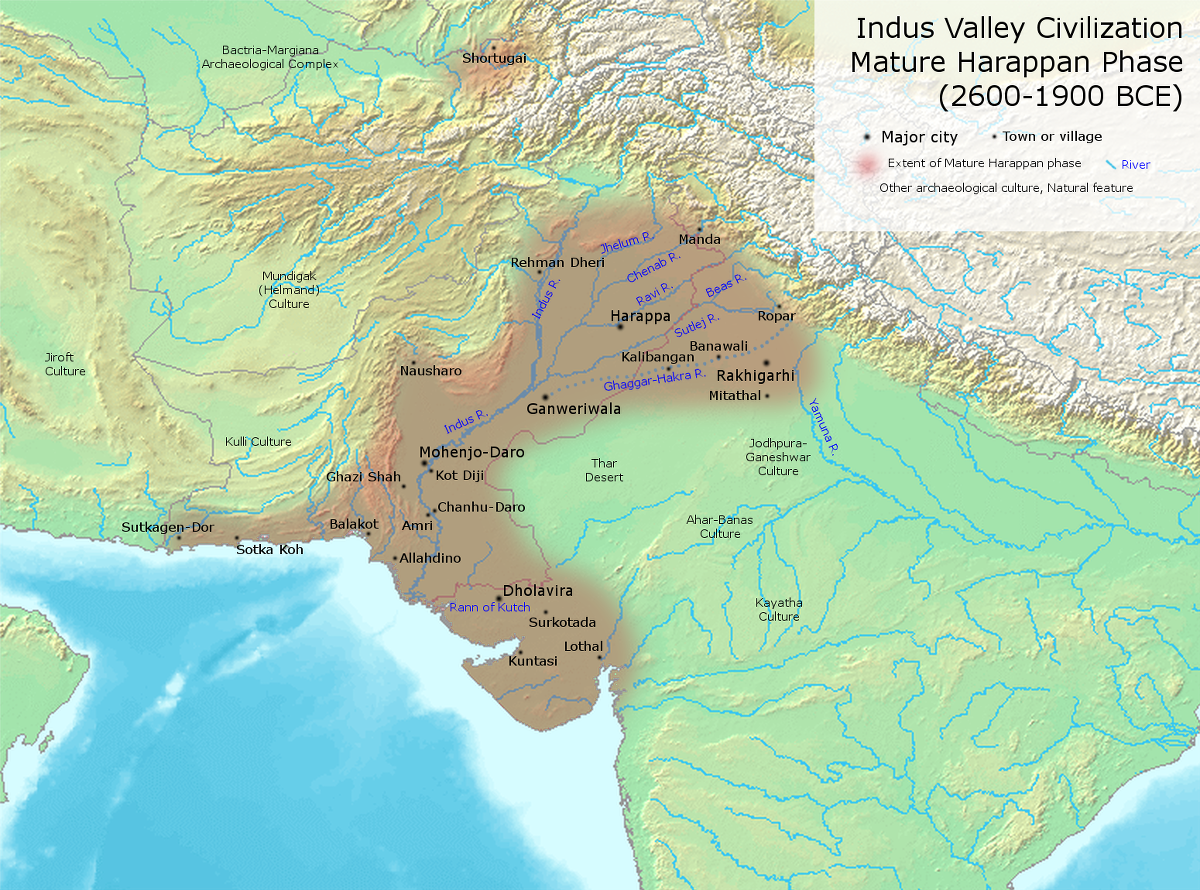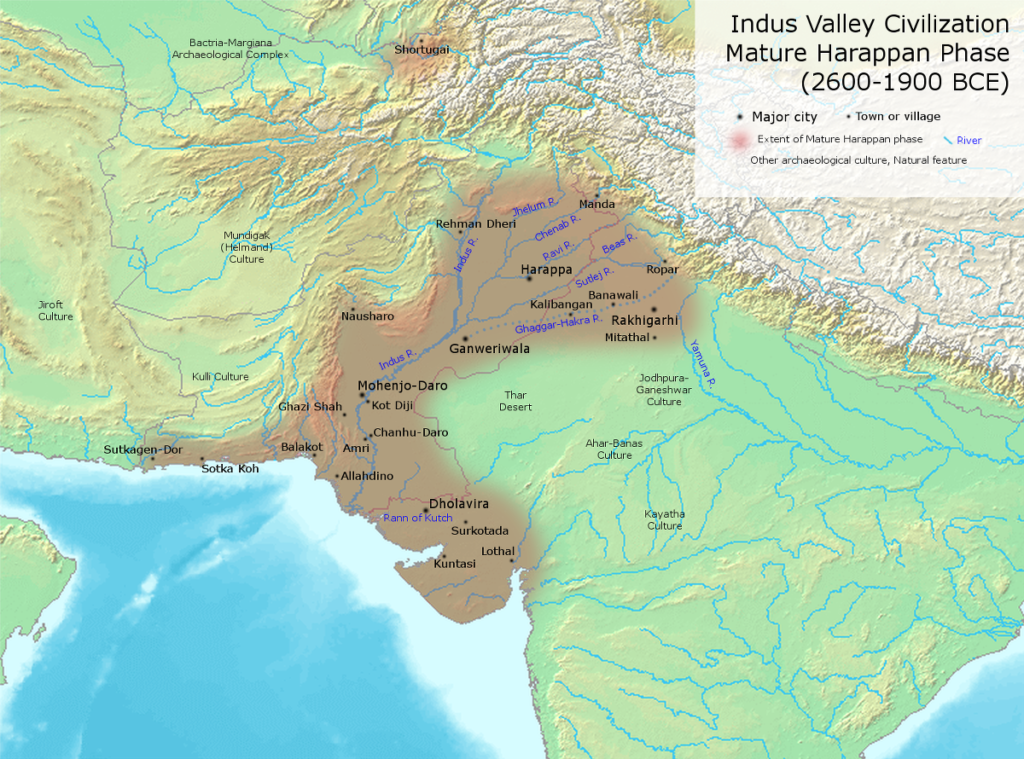Indus Valley Civilization
Indus Valley Civilization existed between 3300-1600 BC in three phases namely early, mature and late phases. It was discovered in 1921 and belonged to Bronze Age. Indus Valley Civilization was located on the banks of the river Indus, particularly at the bends that provided water, easy means of transportation of produce and other goods and also some protection by way of natural barriers of the river.

Sites included Dholavira , Rangpur, Rojdi, Lothal , Sarkotada , Kuntasi, Padri (Gujarat) Kalibangan (Rajasthan), Bhagwanpura, Banawali (Haryana), Diamabad (Maharashtra), Alamgirpur (U.P.), and Mauda (Jammu).
The most unique feature of the civilization was development of Urban Centers
Architecture Snapshot: Mohenjodaro Site
- The settlement is divided into two sections, one smaller but higher other larger but lower.
- Upper is called Citadel and the other Lower Town.
Citadel:
- Citadel has structure most probably used for special public purposes like Warehouse & Great Bath.
- ‘Granaries’ which were used to store grains which give an idea of an organized collection and distribution system.
- ‘Great Bath’ – public bathing place shows the importance of ritualistic bathing and cleanliness in this culture. It is still functional and there is no leakage or cracks in the construction.
- To watertight bricks, mortar made of gypsum was used.
- Evidence of building of big dimensions which perhaps were public buildings, administrative or business centers, pillared halls and courtyards.

Lower Town
- It was walled, probably to provide security to the people. The fortifications with gateways enclosing the walled cities, also shows that there may have been a fear of being attacked.
- Rectangular grid pattern of layout with roads that cut each other at right angles.
- Used standardized burnt mud-bricks as building material.
- Most complete ancient system of public drainage system yet discovered. The main channels were made of bricks set in mortar and were covered with loose bricks that could be removed for cleaning. In some cases, limestone was used for covers.
- No evidence of temples.
Domestic Architecture:
- Present in Lower Town
- Most of the houses had private wells and bathrooms. The bathrooms had drains connected through wall to the street drains.
- Many of houses were centered on a courtyard with rooms on all sides. The courtyard was probably center of activities.
- There are also no windows in walls on ground floor.

Indus Valley Sites in Rajasthan:
- Baror
- Karanpura

